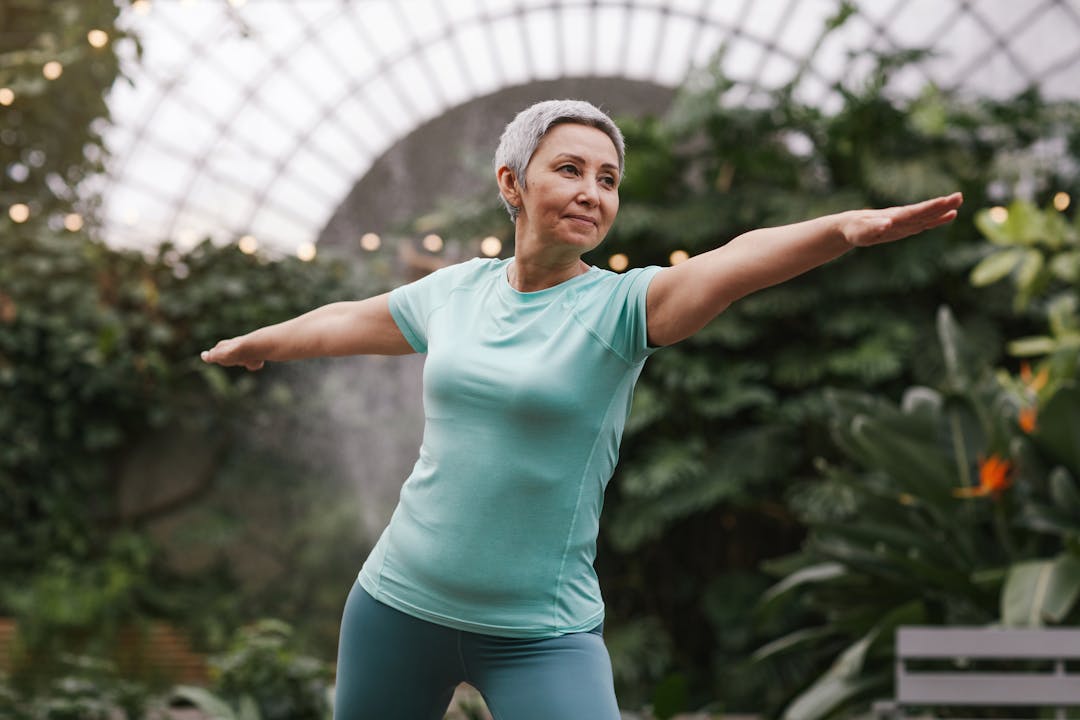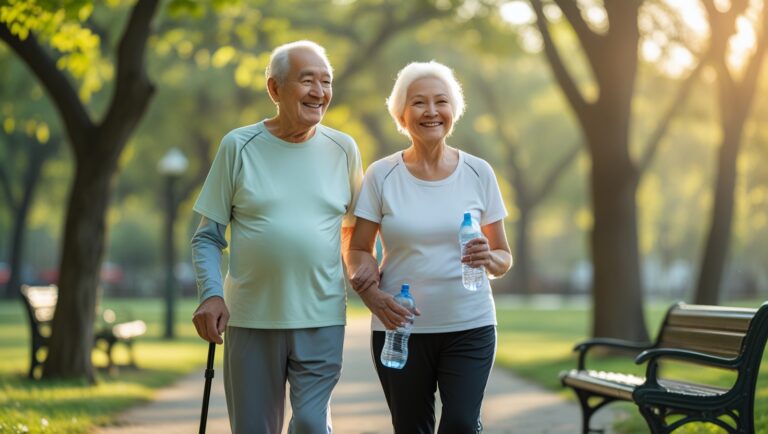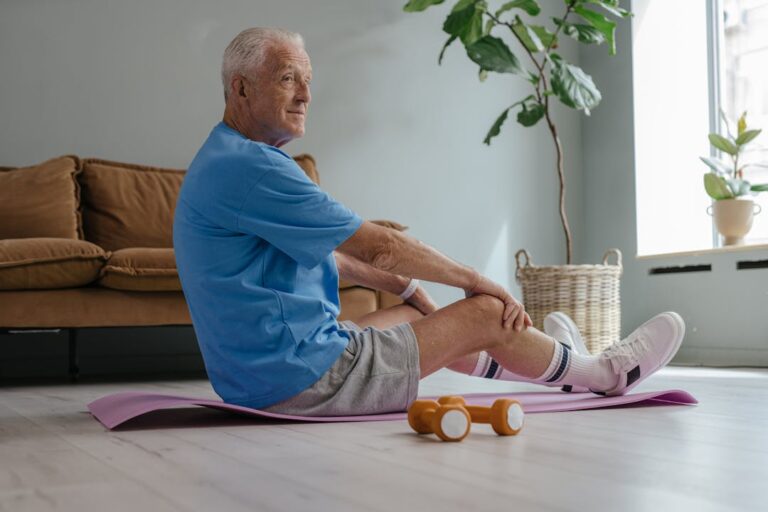Balance Workouts for Seniors: Stay Steady, Safe, and Independent
Falls are one of the leading causes of injury in older adults. But here’s the good news: consistent balance workouts for seniors can significantly reduce your risk and keep you confidently on your feet. With just a few minutes of daily practice, you can improve your stability, posture, and coordination.
Why Balance Training Is Crucial for Seniors
As we age, our sense of balance weakens due to changes in muscles, joints, and vision. Reduced balance can lead to falls, injuries, and decreased confidence in moving around. That’s why balance workouts for seniors are not just about fitness—they’re about staying independent.
According to Mayo Clinic, balance exercises help strengthen core muscles and improve body awareness, two key elements for preventing falls in the elderly.
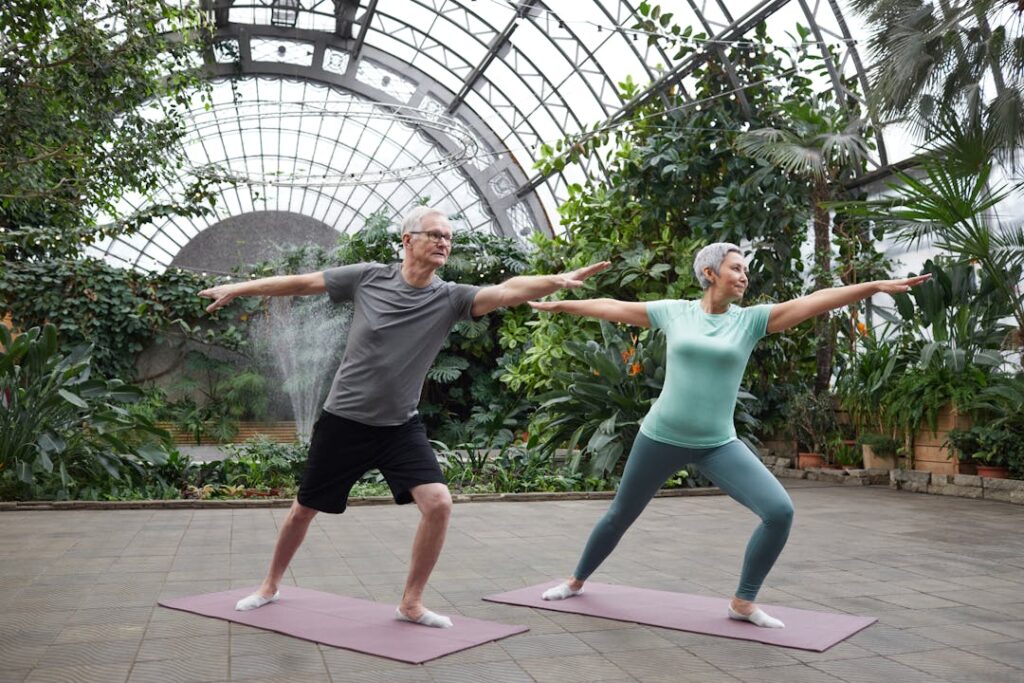
Top Balance Workouts for Seniors (No Equipment Needed)
Here are safe and effective balance exercises for the elderly that can be done at home with little or no equipment:
1. Single-Leg Stand
Stand behind a chair and hold the back for support. Lift one leg slightly and hold for 10 seconds. Repeat with the other leg.
2. Heel-to-Toe Walk
Walk in a straight line, placing the heel of one foot directly in front of the toes of the other. This enhances coordination and foot control.
3. Side Leg Raises
Hold onto a chair for support. Lift one leg out to the side and return to center. This improves hip strength and balance.
4. Chair Sit-to-Stand
Sit on a sturdy chair and stand up slowly without using your hands. Then sit back down. This builds strength and stability in the legs.
5. Toe Lifts
Stand straight and lift up on your toes, then slowly lower back down. Strengthens calves and improves ankle stability.
Tips for Safe Balance Training
Before you begin any senior workout program, including balance routines, keep these safety tips in mind:
- Consult your doctor before beginning any new exercise.
- Perform exercises near a wall, table, or sturdy chair for support.
- Wear non-slip shoes and comfortable clothes.
- Start slowly—just 5–10 minutes per day is a good beginning.
- Have a caregiver or loved one nearby if you need assistance.
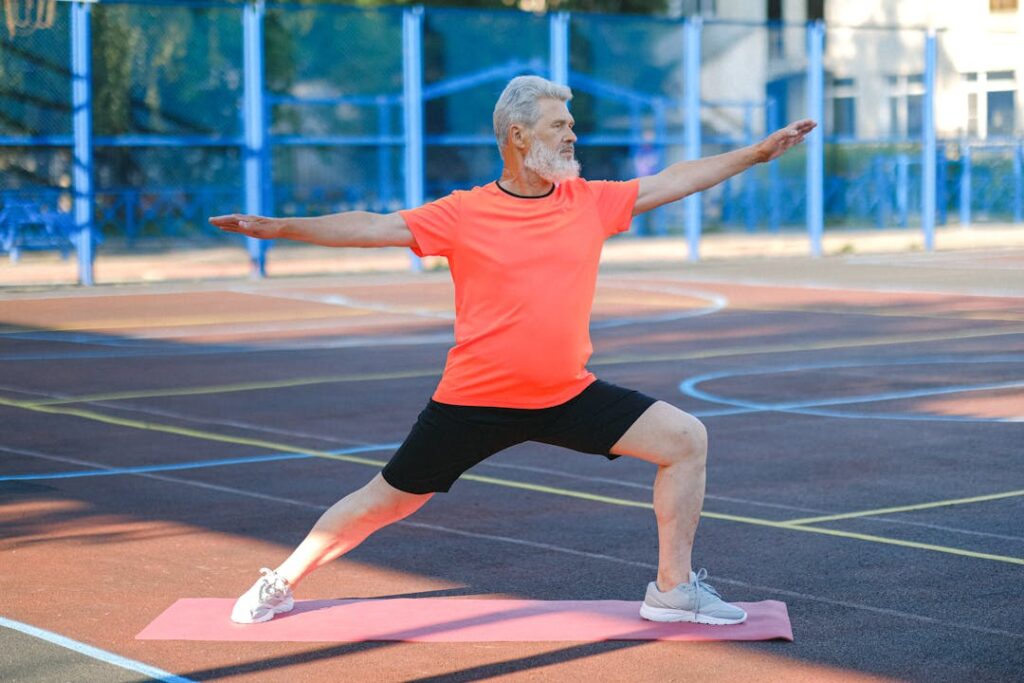
Seated Balance Exercises for the Elderly
If you prefer to exercise while sitting, these seated exercises for the elderly can still help improve core and posture:
- Seated torso twists
- Arm raises while seated
- Leg lifts in a chair
- Seated marching in place
These gentle movements activate core muscles and help with coordination.
Weekly Balance Workout Schedule for Seniors
| Day | Activity |
|---|---|
| Monday | Single-leg stands (3 sets per leg) |
| Tuesday | Heel-to-toe walk (10 steps x 3) |
| Wednesday | Chair sit-to-stand (5 reps x 2 sets) |
| Thursday | Toe lifts + side leg raises |
| Friday | Seated balance exercises |
| Saturday | Rest day or light walking |
| Sunday | Combine 2–3 exercises of your choice |
Consistency is more important than intensity. Doing these balance workouts for seniors regularly builds long-term stability.
Other Exercises That Improve Balance
Balance doesn’t exist in isolation. These other exercises for the elderly can indirectly support your balance:
- Yoga for seniors – improves flexibility and core strength
- Tai chi – low-impact movement that enhances body awareness
- Walking – builds lower-body strength
- Resistance training – strengthens muscles that support joints
Incorporating these into your senior workout program will create well-rounded strength and confidence.
When to See a Professional
If you’ve experienced recent falls, dizziness, or trouble walking, it’s important to consult with a physical therapist or healthcare provider. They may create a custom elderly exercise program that suits your needs safely.
Final Thoughts
Practicing balance workouts for seniors just a few minutes a day can prevent falls, improve coordination, and help you move through life with more confidence. From simple chair exercises to full-body movements, there’s a routine that fits your comfort level.
🧠 Always talk to your doctor before starting any new exercise program.
📢 Take the Next Step
Explore our other related articles:
📌 Disclaimer
This article is for general informational purposes only. It does not constitute medical advice. Always consult your healthcare provider before starting any new exercise. Read our Full Disclaimer and Terms of Use for more information.
